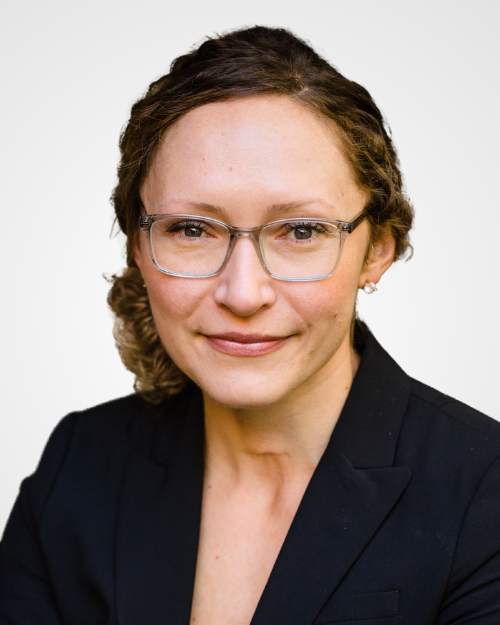Activating Your Planned Giving Program: How to Engage Younger Generations of Donors

Planned giving programs and charitable instruments have been around for roughly 100 years. Yet, few nonprofits have well-established planned giving programs. If there is one thing that successful nonprofit organizations and planned giving programs have in common, it is a strong vision for the future.
For nonprofits seeking to cement their future sustainability, engaging younger generations of donors has never been more important. With philanthropy at a crossroads as Millennials succeed former generations in levels of giving and engagement, savvy nonprofits will prioritize engaging this generation of donors in both present and future planned giving opportunities.
At CFA, we regularly partner with organizations who are looking to start a planned giving program or ramp up an existing one as part of their overall fundraising strategy. For nonprofits seeking to activate and sustain a strong planned giving program, a consistent focus on their organization’s vision and, importantly, the younger generations of donors that will help make that vision a reality, is key.
Millennials’ Increasing Philanthropic Presence and Potential
While many planned giving programs have dedicated comparatively little attention to younger generations, Millennials are emerging as a prominent force in philanthropy. According to the Giving by Generations report recently published by Giving USA, Millennials surpassed Gen Xers in average household giving in 2022, donating an average of $103 more than any other generation on an annual basis.
Younger generations are also actively planning for their financial future. A study completed by Trust & Will found that 75% of Millennial respondents completed a will-based estate plan that was motivated by having a child, losing a loved one, or buying a home. These are ideal opportunities for donors to be considering their legacy and future social impact through planned giving.
And while 71% of these Millennials had a net worth of $500K or less, nonprofits would be wise to begin cultivating relationships with these donors now based on their future giving potential. In addition to the wealth that this generation will build on their own in the decades to come, it is anticipated that nearly $84 trillion will be passed down to younger generations over the next 25 years, which would be the largest wealth transfer in history. While Millennials have a formidable presence in philanthropy now, their influence and giving potential will increase exponentially in the decades to come.
Engaging Younger Donors in Planned Giving
As philanthropy experiences a shift in donor representation by generation, proactive nonprofits and successful fundraising programs will follow suit in expanding their donor engagement strategies beyond Baby Boomers to include Gen Xers and Millennials.
Balancing multiple generations of donors requires an intentional approach, according to Jake Muszynski, CFA Head of Consulting and Principal – Midwest, who notes, “There is no longer a one-size-fits-all approach when it comes to planned giving. Fundraising strategies need to be tailored to the ways each generation prefers to give to and engage with the organizations they support.” Jake recommends that organizations provide regular opportunities for planned giving for donors to learn and connect with a like-minded community of supporters.
Successful planned giving programs are centered around the future donors that will someday make their vision a reality. Engaging younger generations requires nonprofits to extend their gaze even further, constructing compelling visions well into the future. Jake recommends that “nonprofits think about their legacy and the impact they will achieve over the next 50 years or more, given that the planned gifts of younger donors may not be realized for decades to come.”
In addition to leading the way in giving, Millennials are more likely to take a hands-on approach, dedicating time as a volunteer and desiring a seat at the table by seeking roles as board and committee members. These committed volunteers are often the ideal prospect for planned gifts as an organization’s closest supporters.
According to Giving USA, Millennials want to hear regularly from the charities they support and are the most receptive of any generation to receiving monthly multi-channel communications via direct mail, email, and/or text. By providing regular communications and special events that provide planned giving donors with inside access to your organization’s strategic plan, emerging trends, and new innovative programs, nonprofits can keep this critical group of donors engaged around their shared legacy and collective future impact. Jake agrees that “although planned giving donors won’t bear witness to the impact of their generosity, nonprofits can keep these donors connected – both to the organization and to one another – through effective communications and community.”
The Best Time to Start a Planned Giving Program Is the Present
Many nonprofits often wonder when and how to launch a planned giving program, especially when current organizational resources and capacity are limited. Jake recommends incorporating planned giving into any comprehensive campaign at a minimum, which is typically centered around creating strong donor communities and collective impact. While campaigns provide an optimal launchpad for a planned giving program, organizations do not need to wait for a campaign to begin promoting planned giving. “These efforts can be woven into ongoing communications and cultivation efforts,” says Jake, “by casting a long-term vision and offering donors compelling opportunities to invest in both present-day innovation and future impact.”
And although many planned giving programs are tied to an endowment, the lack of one should not hinder a nonprofit from promoting and actively seeking planned giving commitments. It is these early planned giving commitments that become the bedrock of a future endowment. CFA recently offered a series of guiding questions for nonprofits looking to build a compelling case for their endowment, which should provide your most steadfast donors a clear and compelling opportunity to invest in a future where your organization is doing your best work.
Regardless of your nonprofit’s fundraising capacity, engaging your donors around a tangible and transformational vision will lead to increased support in the present and the future from donors spanning all generations. Nonprofits that begin cultivating authentic planned giving communities with younger generations of donors today will create a shared legacy amongst the future donors that may someday bring that legacy to life.
CONTACT US
Build a stronger foundation for your nonprofit tomorrow by activating your planned giving program today. If your organization is interested in launching or strengthening your planned giving program, contact CFA to explore how we can help.
Kendall Carlson, Content Writer
A frequent contributor to CFA’s digital content, Kendall Carlson has spent her career advancing nonprofit organizations across the Twin Cities. With 16 years of experience, Kendall brings a balance of strategic and operational leadership spanning fundraising, program development, evaluation, and strategic planning. Most recently, Kendall served as Development and Communications Director at Hired, where she diversified revenue for the organization’s $11M budget and increased individual giving by 60%, led a rebrand, and launched an organization-wide data for impact initiative. Prior to Hired, Kendall served at Greater Twin Cities United Way, where she led an advancement strategy team to increase investment and engagement from the organization’s top corporate and major donors. Kendall is known as a strategic, solution-oriented leader with a high capacity for detail and commitment to quality. She launched her consulting practice, Luminate Consulting, in 2022 to bring her skills in fundraising and program strategy to nonprofits seeking sustainable growth.

